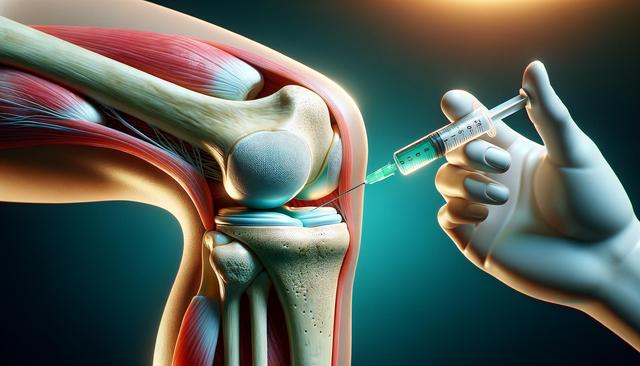Understanding Knee Gel Injections
Knee gel injections, also known as viscosupplementation, are a non-surgical treatment option aimed at relieving knee pain, particularly in individuals with osteoarthritis. This approach involves injecting a gel-like substance—typically made from hyaluronic acid—directly into the knee joint. Hyaluronic acid is naturally found in joint fluid and plays a role in lubricating and cushioning joints. In osteoarthritis, the quality and quantity of this substance decrease, contributing to pain and stiffness. By supplementing the joint with hyaluronic acid, these injections aim to restore some of the lost lubrication, which may help reduce discomfort and improve joint movement.
These injections are generally considered for patients who have not found sufficient relief from other non-invasive treatments such as physical therapy, lifestyle modifications, or oral pain relievers. While not a cure, they can be a valuable part of a broader pain management strategy for many patients.
Who Might Benefit from This Treatment?
Knee gel injections are primarily recommended for individuals with mild to moderate osteoarthritis who have not responded well to other conservative treatments. They may also be suitable for patients who are not ideal candidates for surgery or who wish to delay knee replacement procedures. Some of the groups who may find this treatment beneficial include:
- Adults experiencing chronic knee pain due to osteoarthritis
- Patients who are not achieving adequate relief with NSAIDs or physical therapy
- Individuals seeking to postpone or avoid surgical options
It’s important to consult a healthcare provider to determine if this treatment is appropriate for your specific medical condition and lifestyle. Diagnostic imaging and physical examinations usually guide this decision.
What to Expect During the Procedure
The knee gel injection procedure is typically performed in a clinic setting and does not require anesthesia. A doctor will first clean the area around the knee and may use a local anesthetic to minimize discomfort. In some cases, excess joint fluid is removed before the gel is injected. The process usually takes less than 30 minutes.
Some patients may need a series of injections spaced over several weeks, depending on the type of gel used and the severity of the condition. After the procedure, you may be advised to rest the knee for a day or two and avoid strenuous activities. Common post-injection experiences include mild swelling or soreness at the injection site, which typically resolves quickly.
Benefits and Limitations
Knee gel injections can offer several advantages for the right candidates. Some of the potential benefits include:
- Improved knee joint lubrication
- Reduced stiffness and discomfort
- Enhanced mobility and quality of life
- Delay in the need for surgical intervention
However, it’s essential to maintain realistic expectations. Not all patients experience the same level of relief, and the effectiveness can vary based on the severity of osteoarthritis and individual response to treatment. Furthermore, the relief provided is generally temporary, often lasting around six months, after which the procedure may need to be repeated if symptoms return.
These injections are not typically recommended for inflammatory joint conditions such as rheumatoid arthritis, and they are less effective in advanced stages of osteoarthritis where joint damage is extensive.
Risks and Considerations
While knee gel injections are considered safe for most individuals, there are some risks and factors to consider. Potential side effects are usually mild but may include:
- Swelling or pain at the injection site
- Allergic reactions, particularly for those sensitive to animal-derived products
- Infection, though this is rare
Patients with bleeding disorders or those taking blood thinners should discuss their medical history in detail with their healthcare provider before undergoing the procedure. Additionally, some gels are derived from animal sources, such as rooster combs, which may be unsuitable for individuals with certain allergies. Newer synthetic formulations are also available, which may reduce the risk of allergic reactions.
It’s also worth noting that insurance coverage for this procedure can vary, and not all plans may include it. Checking with your insurance provider beforehand can help avoid unexpected costs.
Conclusion: Is It a Viable Option for You?
Knee gel injections can be a practical and minimally invasive approach for managing osteoarthritis-related knee pain, especially when other treatments have not provided sufficient relief. While not a permanent solution, they can offer temporary improvement in joint function and comfort, helping many individuals maintain an active lifestyle.
As with any medical procedure, it’s important to have a detailed discussion with your healthcare provider about your individual symptoms, medical history, and treatment goals. Understanding the potential benefits, risks, and limitations allows you to make a well-informed decision about whether knee gel injections are a suitable option for your condition.
